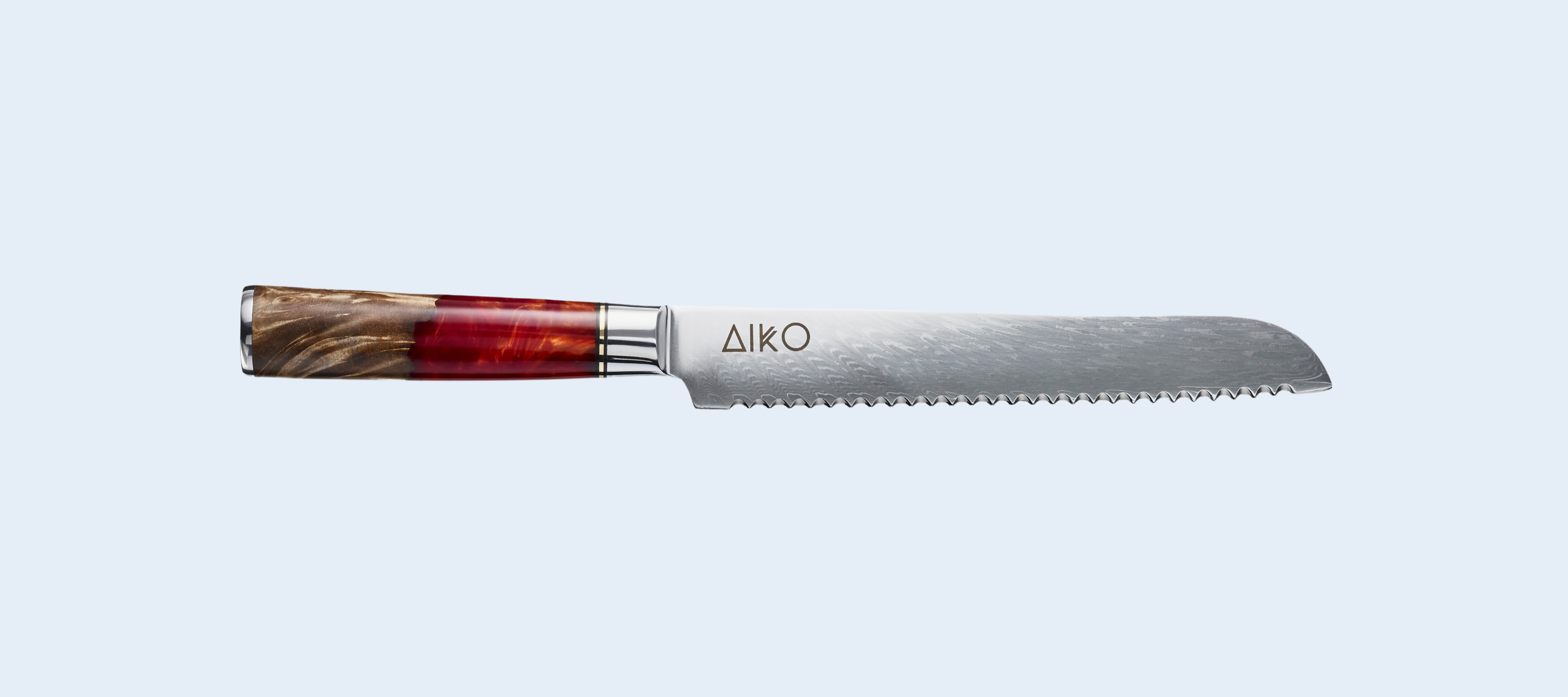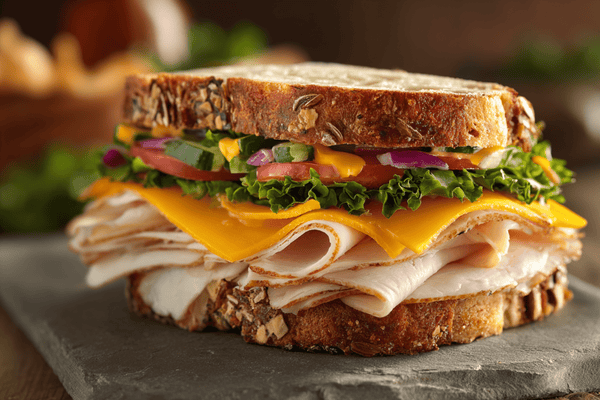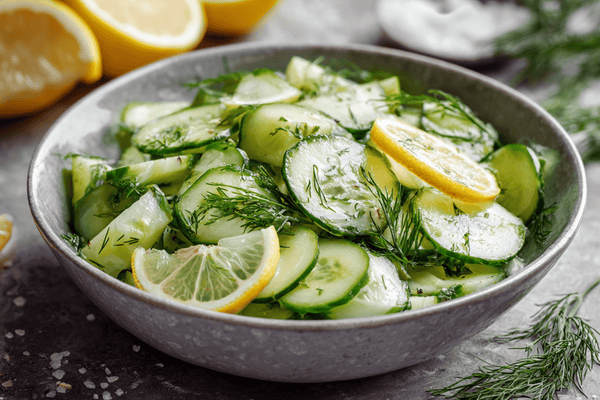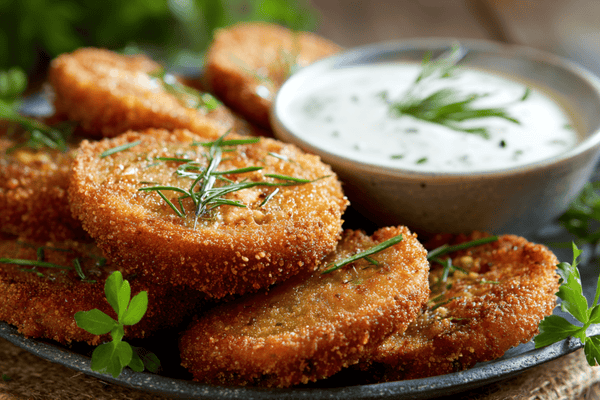 There are so many different types of knives and when you’re working in the kitchen, it can be a little confusing as to which ones you need and which aren’t all that essential. Many people don’t think that a bread knife is that important; after all, it’s only used to cut bread, right?
There are so many different types of knives and when you’re working in the kitchen, it can be a little confusing as to which ones you need and which aren’t all that essential. Many people don’t think that a bread knife is that important; after all, it’s only used to cut bread, right?But that’s where a lot of people are mistaken because bread knives are actually one of the most versatile in the kitchen. So if you’ve been asking yourself why you need a bread knife, this versatility is the answer.
In this guide, we’re going to be looking at why bread knives are so important and how you can put them to good use in your kitchen.
Table of content
What Is a Bread Knife?
When you scan your knife collection, it can be easy to become confused over which is which. But if you’ve been wondering what does a bread knife look like, then we have some good news; they’re one of the easiest knives to pick out of a line-up!A bread knife is a long knife that isn’t all that dissimilar in shape to the santoku knife.

The main difference is that while your santoku has a smooth-edged blade, a bread knife has a serrated blade. Moreover, these knives are quite a bit longer.
Bread knives have this longer blade as it allows you to cut much larger items without compromising on those smooth strokes. Essentially, a sharp bread knife doesn’t only look like a saw, it behaves like one too. It has those serrations so that the knife can better grip the bread while cutting without applying too much pressure which would otherwise crush the food under that sawing action.
What are Bread Knives Used For?
One of the best things about a bread knife is that it is incredibly versatile. While this blade might have the name bread cutting knife, it does so much more. Let’s explore how else you might use your bread knife.
Soft Foods
You would probably reach for your chef’s knife when it comes to tasks like slicing and dicing but what a lot of people don’t realise is that a bread knife might actually be a better choice for this when you are working with softer foods.
The reason for this is that these knives don’t exert as much pressure on whatever it is you are cutting so the food won’t end up squashed. Things like tomatoes, bell peppers and courgettes are ideal for cutting with a bread knife. What’s more, you’ll find it much less hard work and that can’t be a bad thing.
Hard Foods
While your bread knife is an excellent choice for cutting a range of softer foods, its abilities don’t end there. These blades are brilliant for working with denser and tougher foods such as hard veggies and tougher fruits like melons and pineapple.
Working With Cake
 One of the things that surprises a lot of people about the humble bread knife is that it is not only good for that particular baked good. In fact, your bread knife works really well for things like cake, especially when you want to level your cake layers. This is because the knife will move through the cake without messing with the shape. What’s more, when your cake is finished, a bread knife is the perfect utensil for cutting it into slices.
One of the things that surprises a lot of people about the humble bread knife is that it is not only good for that particular baked good. In fact, your bread knife works really well for things like cake, especially when you want to level your cake layers. This is because the knife will move through the cake without messing with the shape. What’s more, when your cake is finished, a bread knife is the perfect utensil for cutting it into slices.
Eggs
There’s nothing tastier than a delicious hard-boiled egg but if you’ve ever tried to cut one with something like a utility knife then you’ll know how tricky this can be. But that’s where your bread knife steps into the spotlight again as it makes light work of cutting hard-boiled eggs. Since it doesn’t apply any pressure, you end up with clean, even slices that improve the presentation of your dish.
Do I Really Need a Bread Knife?
 It’s easy to see that a bread knife is a versatile tool but the question of whether a bread knife is one of the knives you need still hangs in the air.
It’s easy to see that a bread knife is a versatile tool but the question of whether a bread knife is one of the knives you need still hangs in the air.You have probably been taught that you need a massive range of knives in your kitchen if you want versatility. But let us be the first to tell you that that's necessarily true! In fact, for most domestic chefs, there’s really no need for more than three knives.
Your bread knife is clearly one of these owing to the many different ways you can use it. Within your three blades, it’s essential to have a serrated knife. Not only are they great for all of the reasons we have already discussed but if you’re cutting foods with a hard exterior and softer insides, they’ll really shine through.
As well as your bread knife, we would also recommend having a chef’s knife and a smaller blade such as a paring knife or utility knife. Your chef’s knife has a wide blade that is incredibly versatile and will serve you well for most kitchen tasks. However, you’ll want that smaller blade for more intricate and delicate jobs like peeling or mincing garlic, for example.
With these three blades in your kitchen, you’ll be able to handle pretty much anything. So, do you really need a bread knife? Yes, you do!
How to Use a Bread Knife
 Learning how to correctly use a bread knife isn’t difficult; it’s actually one of the most simple knives to use. That said, you will need to take time to practice if you want to make even slices. Part of this is keeping the food still on the cutting board with one hand while cutting with the other. It’s also essential to keep your fingers well out of the way of the blade to avoid injuries.
Learning how to correctly use a bread knife isn’t difficult; it’s actually one of the most simple knives to use. That said, you will need to take time to practice if you want to make even slices. Part of this is keeping the food still on the cutting board with one hand while cutting with the other. It’s also essential to keep your fingers well out of the way of the blade to avoid injuries.The great thing about the bread knife is that it is serrated and this design means it’s much easier to cut with. Those little teeth will do a lot of the work for you so it’s nowhere near as exerting.
Before you start cutting, you will need to choose the best bread knife for you and since there are so many out there, it pays to do your research first. The best knife to cut bread will have slightly wider serrations and this will make for more even cutting and less mess; important if you don’t want to have to clean up a lot of crumbs afterward!
A good bread knife will have more of a saw-like appearance when compared to something like a steak knife which is a little more delicate, even though it’s still a type of serrated knife. It’s also important to find a bread knife that is quite sturdy and doesn’t have a lot of flex in the blade as this can make it more difficult to control.
You will also notice that some bread knives have a pointed tip while others have a round one. In reality, the shape of the tip really makes no difference to how the knife will perform since it isn’t used when cutting. What is important, however, is the length of the blade. Normally, a bread knife will be between 7 and 10 inches but the longer the blade, the more versatile it will be.
Once you have chosen the right bread cutting knife for you then it’s time to start putting it to good use. Here are some great tips for getting the most out of your bread knives.
● It’s important to properly place the bread on your cutting board as this will make it easier and safer for you to cut. You want to place it horizontally and perpendicular to your body so that you can cut across the bread.
● Make sure that you use your dominant hand to hold the knife while your other hand is placed on the bread to hold it still while you are cutting.
● The best chefs know that the way you hold your knife makes all the difference. You could have the best bread knives in the world and if your technique is off, it’ll be really obvious. Make sure that you hold the handle close to the blade with the thumb and forefinger pinching at the blade. This way, you have far greater control over the knife and you won’t need to put in as much effort to cut.
Sharpening a Bread Knife
While a bread knife is very easy to use, it is one of the more difficult knives to sharpen. That said, owing to the design, it takes much longer for a bread knife to dull. In fact, a lot of people wouldn’t need to sharpen the knife for the entire time that they own it. Other parts of the knife, such as the handle are more likely to wear before the blade goes dull.That said, it very much depends on how often you use the bread knife. Naturally, the more use you get out of it, the quicker the blade will dull. So it is worth educating yourself on how to sharpen a bread knife.
There are several different tools you can use for sharpening kitchen knives. Most people would opt for something like a whetstone but this won’t be any good when it comes to sharpening your serrated bread knives. You would typically use a sharpening rod for this and you need to sharpen each serration individually, which is why it can be more difficult; not to mention, time-consuming.
It’s also worth noting that most bread knives are single bevelled which means they only need to be sharpened on one side. But it’s still really important to get the angle right which is another reason that this can be difficult if you don’t have any prior experience. If you do want to sharpen your own bread knife at home then you must make sure to note the specs so you sharpen it correctly.
However, many people opt to take their bread knife to a professional for sharpening. This is a good idea for many reasons but most importantly, you can be sure that there won’t be any damage to the knife. A lot of bread knives come with a lifetime warranty but this might not apply if you have damaged the blade through incorrect maintenance.
Things to Look For When Choosing a Bread Knife
Now we know the importance of having one of the best bread knives in our kitchen arsenal, the fun of shopping can begin. However, you will need to choose carefully as not all bread knives are made equal. If you want something really sharp and reliable then you might want to look for the best Japanese bread knife but in any case, the following things should be considered.
Blade
 Potentially the most important thing to look at when buying any type of knife is the quality and type of blade. This is no different when choosing a bread knife and there are a few factors that you will need to think about.
Potentially the most important thing to look at when buying any type of knife is the quality and type of blade. This is no different when choosing a bread knife and there are a few factors that you will need to think about.Firstly, you’ll need to decide on what is the best length for a bread knife. Typically speaking, the blades are between seven and ten inches but which you choose will depend on how you use the knife. For example, if you know you’ll be cutting a lot of crusty bread with a hard exterior and soft inside then a longer knife will do the trick.
But if you are going to be working with smaller loaves of bread and other small ingredients such as little pastries then you won’t need something quite as large. For a more versatile bread knife, go for something mid-length.
It’s also crucial to think about the thickness of the blade as this will impact how easily it cuts through bread and other ingredients. A thin blade with a narrow-angle tends to work best when it comes to bread knives. This is because a thinner blade doesn’t create as much friction when cutting which means fewer crumbs and a much smoother cut. What’s more, blades like this typically have a sharper edge so you will be able to cut more finely when you need to.
Finally, you will want to look at what material your bread knife is made from. The best bread knives are made with high carbon steel blades as this makes for a much sharper edge and a greater cutting ability.
Do keep in mind that high carbon steel is more susceptible to corrosion so you will need to make sure you clean the knife properly and take good care of it. But you will be rewarded with a knife that’s incredibly durable and will stay sharp for a very long time.
Serrations
 There are some bread knives out there that don’t have serrations and are a straight-edged knife; now we bet that’s thrown you off, hasn’t it? But, the argument is whether these can even be called a bread knife at all. We’re sure that’s a discussion for another day.
There are some bread knives out there that don’t have serrations and are a straight-edged knife; now we bet that’s thrown you off, hasn’t it? But, the argument is whether these can even be called a bread knife at all. We’re sure that’s a discussion for another day.A serrated bread knife will have a serrated edge which gives you a smooth and clean-cut and this is essential. Having these serrated teeth means that you can saw through the food without a lot of friction or pressure. When there is too much pressure, this can cause the food to tear or shred and this spoils the presentation.
When you are choosing a bread knife, make sure to look for those that have deep and very pointed teeth as these offer greater performance and more versatility. It’s also worth pointing out that less is more when it comes to bread knives and those with fewer serrations tend to perform better.
Handle
So many people place the focus on the blade when the handle of your bread knife is just as important. If the handle is not comfortable to hold then this can affect how easily you can control and use it. Not only does this make your life more difficult but it could also be dangerous.One of the most important things to look for when choosing your bread knife handle is that it is nonslip. The surface should have a good grip that is comfortable to hold and allows you the best control.
You might also want to consider the shape of the handle as this can affect how it feels in your hand. Before committing, try out a few different knives and see what feels best for you. Some manufacturers will make bread knives with ornate handles and while they might look good, they’re not exactly practical.
The best bread knives have handles that are seamless and preferably made from a single piece of material that also forms the blade. The part of the metal that goes into the handle is known as the tang.
Whether you have a single-piece knife or one with a covered tang, it’s essential that it is sturdy. The handle should have no more than three rivets holding everything together.


